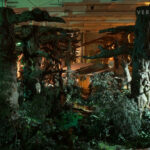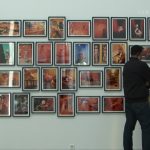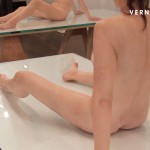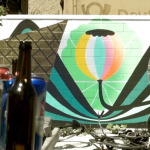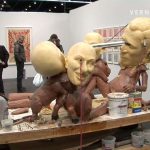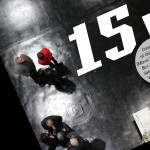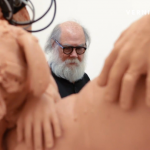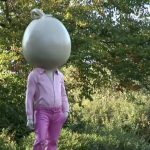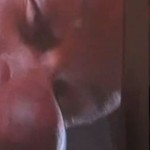At the exhibition space Tarmak 22 in Gstaad (Switzerland), Hauser & Wirth currently shows Paul McCarthy: Alpine Stories and other Dystopias. The exhibition brings together a selection of Paul McCarthy’s drawings, photographs, sculptures, and video work from his series Heidi, White Snow, Caribbean Pirates, and PROPO.
Paul McCarthy: Alpine Stories and other Dystopias / Hauser & Wirth at Tarmak 22, Gstaad. Gstaad (Switzerland), July 30, 2020.
–– Right-click (Mac: ctrl-click) this link to download Quicktime video file.
From the exhibition text:
Artist Paul McCarthy is perhaps most closely associated with his hometown of Los Angeles, a place whose Hollywood’s illusions have fed his prodigious five-decade practice. But McCarthy is also something of an honorary citizen of Switzerland, an enthusiast of all things Swiss who can trace unlikely connections between the sublime landscape and stories of the alpine nation, and the magical kingdom of LA’s Disneyland. ‘I was really into the Matterhorn at Disneyland because I was also into the real Matterhorn and mountains and climbing,’ he has said. ‘The whole alpine aesthetic – chalets, cuckoo clocks, knotty pine, boots, parkas and all that. Making a piece that references Disneyland directly didn’t happen until I moved to LA. My interest in Disneyland spins out of my interest in Hollywood.’
Beginning 18 July, Hauser & Wirth will present ‘Alpine Stories and other Dystopias’ at Tarmak 22 in Gstaad, bringing together a selection of works by McCarthy that span two decades and various mediums to reveal the provocative ways in which both worlds – the storied Swiss Alps and the ersatz magic of Hollywood’s Disney fantasies – overlap, intertwine, and refract in startlingly powerful ways. Themes of innocence and utopia, and their inverses of depravity and dystopia, course through the drawings, photographs, sculptures, and video work on view. These have been selected from the artist’s celebrated large-scale projects and series Heidi, White Snow, and Caribbean Pirates, as well as his PROPO photographs.
McCarthy looks beneath the endearing façades of classic Disney productions and the sanitized versions of European fables, to excavate the untamed urges and pathologies of their real world parallels. Deploying humor and irony in such series as White Snow and Caribbean Pirates, he fleshes out familiar characters as avatars of the libidinousness, violence, conflict, and chaos of human society. The walnut sculpture ‘WS, White Snow Dopey Dopey Head, Five Feet’ (2014), for example, conjures perverse visions of Snow White’s relationship with the dwarf Dopey from Disney’s beloved 1937 animated classic film ‘Snow White and the Seven Dwarfs’. This sculpture is among five White Snow works in the exhibition that take the famous fairytale as a springboard for exploring the Oedipal complexities of family, the institutionalization of history, and the urges of pop culture consumption. Among these works is the large scale sculpture ‘White Snow Head’ (2012), a flesh-colored silicone rendering of the princess with the aspect of a toppled idol from antiquity. Taking on another beloved icon, McCarthy’s ‘Santa (with Butt Plug) Bronze’ (2004) embraces debauchery and desire as part of the territory where our fundamental impulses collide with our most cherished myths and hypocritical societal norms.
These works acquire additional layers of meaning in the setting of Tarmak 22, with its monumental windows offering views of the Alpine landscape outside, and in juxtaposition with key works from McCarthy’s Heidi series. The artist has stated that ‘the purity of Alpine culture is not pure.’ He explored this notion in his landmark 1992 video work ‘Heidi’, made with fellow artist Mike Kelley. The opus, on view here, was inspired by the eponymous 1881 children’s book by Swiss author Johanna Spyri, a story not uncoincidentally made into a Disney television spectacular in 1993. ‘Heidi File’ (2000), a collection of photographs taken from found images, finds McCarthy returning to the iconic Swiss character as subject matter. Using material drawn from posters, maps, magazines, and other ephemera, he explores the many possible incarnations of the innocent mountain girl. By displaying the different representations of the heroine and her Alpine environment, McCarthy juxtaposes the banality of advertisements and found objects, with their insidious manipulation of ‘innocence’, to awaken viewers to the darker dystopian truths of mass consumer culture.
